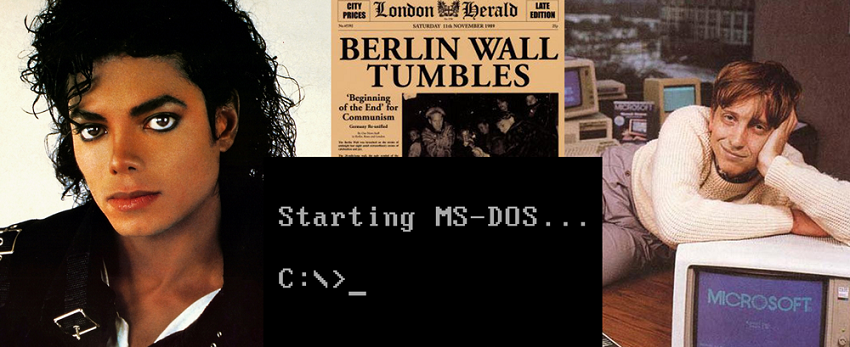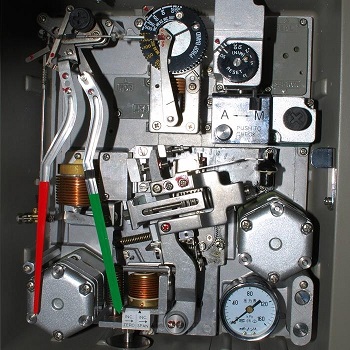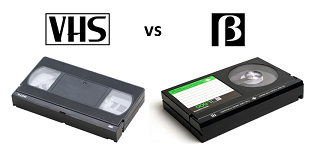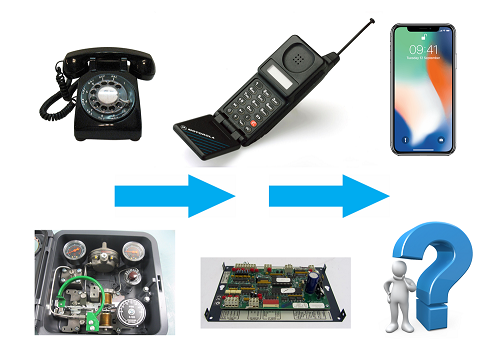So, where are we now 30 or 40 years after DDC came to market?
Anto Budiardjo,
Fractional Entrepreneur
anto@budiardjo.com
|
November 2017 |
[an error occurred while processing this directive] |
| The DDC is Dead, Long Live DDC! So, where are we now 30 or 40 years after DDC came to market? |
Anto Budiardjo, Fractional Entrepreneur anto@budiardjo.com |
| Articles |
| Interviews |
| Releases |
| New Products |
| Reviews |
| [an error occurred while processing this directive] |
| Editorial |
| Events |
| Sponsors |
| Site Search |
| Newsletters |
| [an error occurred while processing this directive] |
| Archives |
| Past Issues |
| Home |
| Editors |
| eDucation |
| [an error occurred while processing this directive] |
| Training |
| Links |
| Software |
| Subscribe |
| [an error occurred while processing this directive] |
You can say a lot of things about the 1980’s! The IBM PC was launched with great fanfare, with the first mass-market computing platform MS-DOS at its core. Michael Jackson, Madonna, Whitney Houston and Phil Collins were serenading us on CDs and FM radio, we saw the downing of the Berlin Wall, and the end of the Cold War, with a promise of peace around the world.

For building automation, the 1980’s was a
turning point, with the broad use of the DDC (Direct Digital Control).
The value of DDC was immediately identified by early adopters in the
industry, and within a few years, innovative companies formed to market
this new phenomenon. Some of these companies are still around today;
others became brands within large BAS companies.
Life before
DDC
 For those new to
controls technology history,
the DDC we use today was not the first control system technology ever
devised. From around the 1940’s, pneumatic control systems gained broad
use in large buildings. Pneumatic systems use compressed air to perform
calculations, strategies and the force to affect output such as
actuators. Pneumatics achieved a significant amount of functionality
and robustness in controlling HVAC systems, so much so that many
buildings use pneumatic to this very day, yes, I’m not kidding.
Replacement parts are available on the Engenuity site, a distribution company steeped in
modern networked control systems!
For those new to
controls technology history,
the DDC we use today was not the first control system technology ever
devised. From around the 1940’s, pneumatic control systems gained broad
use in large buildings. Pneumatic systems use compressed air to perform
calculations, strategies and the force to affect output such as
actuators. Pneumatics achieved a significant amount of functionality
and robustness in controlling HVAC systems, so much so that many
buildings use pneumatic to this very day, yes, I’m not kidding.
Replacement parts are available on the Engenuity site, a distribution company steeped in
modern networked control systems!
The move from pneumatic to DDC didn’t happen
overnight. As electronics started to become popular in the 70’s,
innovative companies created products to replace pneumatic panels with
digital circuit panels. Around the same time, influences from the
industrial manufacturing industry introduced new ways to program
building control systems, initially using minicomputers such as the
Digital Equipment PDP-11. These were digital but hardly “direct” (where
logic decisions took place remote from the Input/Output terminals).
They were also expensive and suitable only for large buildings.
With digital electronics starting to reduce in
size and cost, microprocessors eventually enabled smaller devices that
had the logic processing on the same box as the I/O, in other words,
more DIRECT digital control, thus the name DDC.
These new types of devices started to be
developed in the late 1970’s and gained market share in the 1980’s as
they became more economical than pneumatic systems. Another enabler for
this was the adoption of various types of programming “languages” by
which engineers could configure the behaviour of these new types of
devices. This is really the birth of the DDC.
It’s worth noting that DDCs were very disruptive
to the pneumatic industry. Many manufacturers relied on selling and
providing services for pneumatic systems; I have no doubt that they
resisted the DDC technology in the same way as major vendors resist
change today. But the value of DDC quickly proved itself. Many small
innovative companies flourished, and the major vendors either adapted
(Honeywell and JCI), or they (Powers, Barbara Coleman, etc.) went out
of business or got swallowed by larger companies. It's nice to know
that some things don’t change!
Introduction
of DDC
Other than replacing pneumatics, DDC brought new
benefits. One was the fact that since digital systems have memories,
DDCs were able to store data, specifically a history of point values.
Imagine the amazement to engineers able to look at the history of value
in the past so they can figure out causes of problems they are facing.
Try doing that with air pressure!
The stunning thing about DDC was that they soon
became networkable, and this fact alone made them immensely powerful
thanks to Metcalfe's law. This was the first interaction
that the building automation industry had with data and information
technology (even though the term “IT” was new in the 80’s).
Many of us today think of the big data analytics
as being the birth of data-centric BAS systems. As we can see from the
above, placing value on data was actually one of the reasons for the
birth of DDC. But of course, there is data, and there is big data.
Networks,
standards and the Internet
The next chapter in the evolution of control
systems was the growth of networking. Early DDC systems had very
limited, slow and proprietary networking. Networking brought immense
value to the DDC since multiple controller devices would be able to
share key information about the building, status of equipment and
information such as setpoints and alarms. It wasn’t long before
building owners saw these benefits, but they also saw that proprietary
and incompatible networks forced them to be beholden to specific
vendors, not a good thing.
 The “standard wars” of
the 1990’s and 2000’s were painful for many
building owners. Often compared to the battle between VHS and Betamax
that many say is the cost of innovation. The controls industry came
forth with a number of contenders: BACnet, LonMark, KNX, Modbus, OPC
and few others. After years of debates (and building owners being
confused), the industry settled mainly on BACnet, leaving the others to
focus on niche uses and applications outside of building systems.
The “standard wars” of
the 1990’s and 2000’s were painful for many
building owners. Often compared to the battle between VHS and Betamax
that many say is the cost of innovation. The controls industry came
forth with a number of contenders: BACnet, LonMark, KNX, Modbus, OPC
and few others. After years of debates (and building owners being
confused), the industry settled mainly on BACnet, leaving the others to
focus on niche uses and applications outside of building systems.
The adoption of the Internet and TCP/IP networks
made a huge impact on controlling systems in two critical ways. First,
TCP/IP is a good networking technology that has proven itself in
connecting billions of devices across the globe and beyond, its use for
building controls was obvious. The second reason is that the Internet
brought about a flurry of data communication, management, storage,
analysis and standards being used for general applications from email
to buying travel tickets. It was only a matter of time that those same
technologies would bring value to buildings. In many ways, these
standards will potentially obscure the value of the BACnet standard the
industry fought so hard for.
Technology
today
Before we look at the future of DDC, let’s take a quick look the mainstream of technology landscape. As noted above, DDC was born in the age of the Personal Computer. For most of us today, the PC is an old paradigm, even its sibling the laptop computer is not the technology that impacts us the most. That accolade is bestowed to the smartphone in your pocket (and to a lesser extent, the tablet).
Why is the smartphone such a powerful tool in our lives? I believe it is because they encompass three key attributes: telephony, smarts, and extensibility.
The core telephony function of the smartphone as a communication device is unmatched. You can make calls, read/write emails, view information, etc. very easily. In most cases, you simply take it out of your pocket, and it works with minimal of fuss and configuration almost anywhere you are in the world. If this is all that a smartphone does it would be magical, but this is only the start.
 Smartphones are, duh,
smart, very smart. It
knows where you are; it has so much processing power that it can know
things that you don’t. It can take pictures and videos; it remembers
where each picture was taken, it knows who were in each picture and
able to organize thousands of pictures easily. It knows how many steps
you made today, and what music you like to listen to, and it can get
any piece of music ever produced in the world. A smartphone does this
by a combination of internal onboard smarts, in seamless concert with
cloud services; creating an almost infinite smartness.
Smartphones are, duh,
smart, very smart. It
knows where you are; it has so much processing power that it can know
things that you don’t. It can take pictures and videos; it remembers
where each picture was taken, it knows who were in each picture and
able to organize thousands of pictures easily. It knows how many steps
you made today, and what music you like to listen to, and it can get
any piece of music ever produced in the world. A smartphone does this
by a combination of internal onboard smarts, in seamless concert with
cloud services; creating an almost infinite smartness.
The last key attribute of the smartphone is its
extensibility by the addition of apps. Any application that is worth
creating either have been created or will be created at some point. App
stores provide distribution to millions of potential users, as apps are
easily and economically installed with little effort. This makes the
smartphone able to do anything, way beyond any definition of a phone or
capabilities of the vendor. While PCs were able to have applications,
the cost and ease of use on smartphones make this attribute truly
awesome.
DDC today
 So, where are we now 30 or 40 years after DDC
came to market?
So, where are we now 30 or 40 years after DDC
came to market?
I think that the smartphone presents a model
pointing to the future of the DDC. For the future of DDC, I propose
three slightly different key attributes: controller, analysis, and
extensibility.
Controlling things is the ‘C’ of the DDC. This,
in essence, is what controllers are all about, all the way back to
pneumatic days. For this, the device needs input and outputs, as well
as some mechanism to decide how the input and other pieces of data
should influence the output. In the old days, this is done via some
programming language, the future of DDC will likely make use of new
methodologies that reduce the effort required by the engineer to
perform this core function. I’m thinking of automated configuration
based on AI and technologies such as semantic tagging.
Just like a
smartphone’s ability to be smart,
future DDC devices will encompass analytics as an inherent ability. And
just like smartphones, the amount of processing power and memory will
enable analytics way beyond any historical trending of the past. Also,
the analytics will not be limited to what can be done onboard, the
ample connectivity of tomorrow’s DDC will allow it to feed and work in
concert with other devices and cloud systems, to bring to bear
information beyond the scope of building controls, such as weather
data, enterprise information and building occupant comfort.
Extensibility must also be at the core of
tomorrow’s DDC. This is, of course, enabled by software components that
can be installed to suit the specific needs of the user at any given
device. Much like smartphones, an app store has to be at the center of
this as the platform for distribution. Innovative companies should be
able to create valuable applications and distribute them globally with
ease on an economic model that rewards the creators and brings value to
the user.
A rose by
any other name

This is my general prediction of the
future of the DDC in the age
of mobile information technology. Few would disagree that there will be
a dramatic advancement of value from a product that looks familiar to
the user.
So, what should we call this new generation of
the device?
I do feel that continuing to call them DDCs is a
disservice to our cause since the new devices I describe are a
generation beyond yesterday’s controllers.
Please make suggestions on what to call these
new-generation, analytics-enabled, extensible controllers. See what
others are saying, and post your thoughts on what we should call these
devices.
[an error occurred while processing this directive]
[Click Banner To Learn More]
[Home Page] [The Automator] [About] [Subscribe ] [Contact Us]